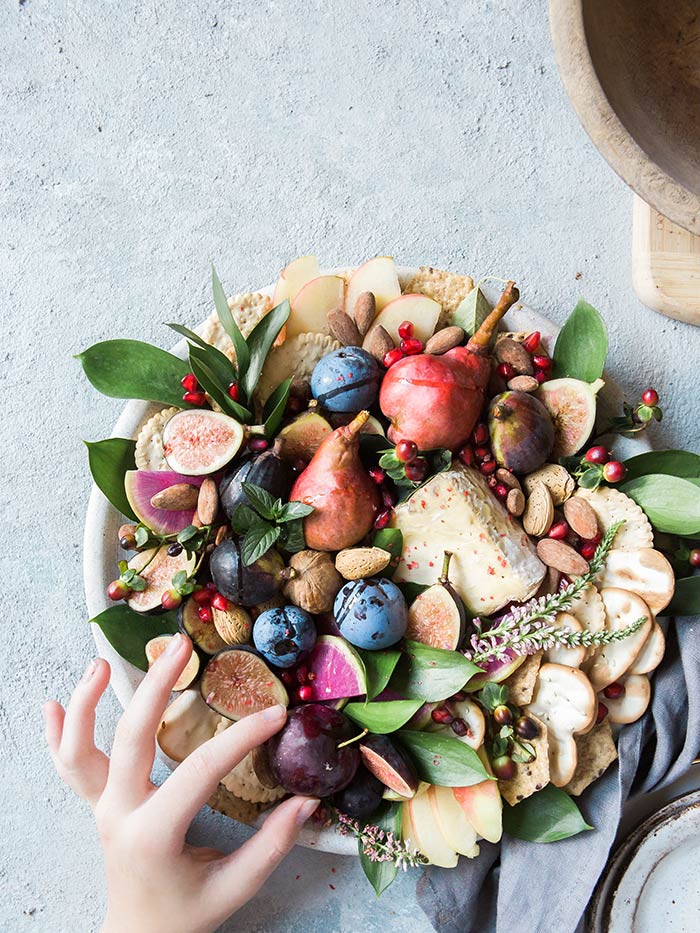Ingredients
Simplifying Pizza Dough Making
Pizza dough making has been a traditional task that requires patience and time to perfect. However, with advancements in culinary techniques, it’s now possible to simplify this process while maintaining its authenticity.
One way to make pizza dough preparation easier is by reducing the number of **_ingredients_** required for the recipe. The two-ingredient pizza dough recipe stands out as a prime example of how simplicity can be achieved without compromising on flavor or texture.
This innovative approach uses only **milk** and **self-raising flour**, eliminating the need for multiple ingredients such as yeast, salt, sugar, and olive oil. The combination of these two staples produces a dough that’s both soft and crispy when cooked.
The simplicity of this recipe lies in its reliance on milk, which serves not only as an ingredient but also as a liquid to help the flour come together. This eliminates the need for separate water or yeast, reducing the preparation time significantly.
To make this two-ingredient pizza dough recipe, simply mix 1 cup of **milk** with 2 cups of **self-raising flour** in a large bowl until a sticky dough forms. Knead the mixture for about 5-7 minutes until it becomes smooth and elastic.
Next, shape the dough into your desired pizza shape and top with your favorite ingredients. Bake the pizza in a preheated oven at 425°F (220°C) for 15-20 minutes or until the crust is golden brown and the toppings are cooked through.
The two-ingredient pizza dough recipe offers numerous benefits, including reduced preparation time, simplified ingredient lists, and a soft yet crispy texture. This innovative approach to pizza dough making has opened doors to new possibilities in the culinary world, allowing home cooks to create delicious pizzas with ease.
The key to making a delicious two-ingredient pizza dough lies in the quality and combination of its ingredients. The two main components are flour and a liquid, which can be either water or olive oil.
Flour is the primary ingredient in this recipe, providing structure, texture, and flavor to the dough. It’s essential to use high-protein flour, such as bread flour or all-purpose flour with a high protein content, to ensure that the dough develops a good gluten network and rises properly.
The type of flour used can also affect the final taste and texture of the crust. For example, using whole wheat flour will give a nuttier flavor and a denser crumb, while using all-purpose flour will result in a lighter and more neutral-tasting crust.
The liquid ingredient is added to the flour to create a sticky dough that can be shaped into balls or circles for baking. Water is the most common choice, but olive oil can also be used as a substitute or addition to the water, which will add a richer flavor and a tender crumb.
The ratio of flour to liquid is crucial in this recipe. Using too much liquid will result in a dough that’s difficult to work with and may not rise properly, while using too little liquid will make the dough too dry and dense. A general rule of thumb is to use 1:0.8 or 1:1 ratio of flour to water.
Other ingredients can be added to the dough to enhance its flavor and texture. For example, yeast can be used to create a lighter and airier crust, while salt can be added to bring out the flavors of the other ingredients.
Some common mix-ins that can be added to the dough include cheese, herbs, spices, meats, or vegetables. These ingredients can be folded into the dough before shaping it into balls or circles for baking, creating a delicious and unique flavor combination.
In conclusion, the quality and combination of ingredients in this two-ingredient pizza dough recipe are crucial to achieving a delicious and crispy crust. By using high-protein flour, adjusting the ratio of flour to liquid, and adding other ingredients as desired, anyone can create a mouth-watering homemade pizza that rivals those found at their favorite restaurant.
1 cup of warm water (around 100°F to 110°F)
The first essential ingredient for our two-ingredient pizza dough recipe is a cup of warm water, specifically with a temperature range of around 100°F to 110°F.
This initial step requires precise control over the temperature of the water to ensure it reaches the ideal range.
Avoiding both underheated and overheated water is crucial as it can impact the final texture and consistency of the dough.
The optimal temperature allows the yeast in the dough, which we’ll be using in combination with this warm water, to activate properly and initiate fermentation processes.
This process is fundamental to producing a light, airy, and well-textured crust for our homemade pizza.
Warm water serves as more than just an ingredient; it plays a pivotal role in initiating the biochemical reactions within the dough, setting the stage for its development into a delicious, crispy, yet tender crust.
The specific temperature range of 100°F to 110°F is significant because it’s warm enough for the yeast to activate but not so hot that it kills off beneficial bacteria and other microorganisms necessary for fermentation.
Given these considerations, measuring out the water carefully and checking its temperature before mixing with our second ingredient is a crucial step in preparing our dough.
1 packet or 2 teaspoons of active dry yeast
The success of a good Pizza depends heavily on the quality and quantity of its ingredients, with one of the most crucial components being yeast.
Active dry yeast, in particular, plays a vital role in the process of fermentation, which is essential for producing the characteristic flavor, texture, and aroma of pizza dough.
The use of active dry yeast versus other forms like instant yeast or wild yeast can significantly impact the outcome of your final product.
For this recipe, we recommend using either 1 packet (2 ¼ teaspoons) or 2 teaspoons of active dry yeast, as specified in the ingredient list.
This amount will ensure that the dough rises correctly and provides a light, airy texture once it’s been baked.
The correct ratio of yeast to flour is also essential for achieving a successful fermentation process, which can be affected by factors such as temperature, humidity, and the quality of your ingredients.
To achieve optimal results, always use fresh active dry yeast, store it properly, and follow the recommended dosage according to the recipe or packaging instructions.
This way, you’ll ensure that your two-ingredient pizza dough turns out as expected – soft, fluffy, and perfect for topping with your favorite ingredients!
The key to making a delicious two-ingredient pizza dough is selecting the right ingredients. The most common and recommended combination for this recipe is flour and Greek yogurt.
The flour serves as the base ingredient, providing structure and texture to the dough. All-purpose flour or bread flour can be used, depending on the desired level of chewiness in the finished crust.
Greek yogurt adds moisture and tenderness to the dough, while also contributing a tangy flavor that complements the richness of the cheese.
The ratio of flour to Greek yogurt is crucial for achieving the right consistency. A general rule of thumb is to use 1 cup of flour for every 1/2 cup of Greek yogurt. However, this can be adjusted based on personal preference and the desired thickness of the crust.
It’s worth noting that some variations of this recipe may include other ingredients such as salt, sugar, or spices to enhance flavor. Nevertheless, the fundamental combination of flour and Greek yogurt remains the core component.
When selecting flour for the two-ingredient pizza dough, it’s essential to consider factors like protein content and gluten development. Bread flour tends to have a higher protein content than all-purpose flour, which can result in a chewier crust.
On the other hand, Greek yogurt is an essential component that brings moisture and tenderness to the dough. Choosing a high-quality Greek yogurt with live cultures can help create a more complex flavor profile.
In addition to selecting the right ingredients, proper mixing and kneading techniques are also crucial for developing the gluten in the dough and achieving the desired texture.
Instructions
The Mixing Process
The mixing process in any recipe, including the two-ingredient pizza dough recipe, is a crucial step that determines the final texture and consistency of the product.
When it comes to mixing ingredients for a two-ingredient pizza dough, such as flour and water, there are several factors to consider to achieve optimal results.
The first step in the mixing process is to combine the dry ingredient (flour) with the liquid ingredient (water) in the correct proportions.
Here’s how to mix the two-ingredient pizza dough:
-
Mix the flour and water together until a shaggy dough forms.
-
Add more water or flour if necessary, depending on the desired consistency of the dough.
Here are some tips for mixing the two-ingredient pizza dough effectively:
-
Use a digital kitchen scale to accurately measure the ingredients and ensure that they are in the correct proportions.
-
Use cold water to help reduce the risk of overworking the dough, which can lead to tough or dense pizza crusts.
-
Mix the dough just until the ingredients come together in a shaggy mass. Overmixing can lead to a tough or chewy texture in the finished product.
Once you have mixed the two-ingredient pizza dough, it’s essential to knead it for several minutes to develop the gluten and achieve the desired consistency.
Kneading involves using a pushing-down motion with your hands or the heel of your palm to work the dough into a smooth, elastic ball.
Here are some tips for kneading the two-ingredient pizza dough:
-
Mix and knead the dough on a lightly floured surface to prevent sticking and promote even development of the gluten.
-
Use long, smooth strokes to knead the dough, working from the center outwards towards the edges of the ball.
-
Continue kneading until the dough is smooth, elastic, and slightly sticky to the touch. This should take about 5-10 minutes, depending on your mixing speed and the desired consistency of the dough.
After kneading the two-ingredient pizza dough, it’s essential to rest and relax the gluten in order to achieve a tender and easy-to-work-with crust.
This resting period is called “proofing,” during which time the yeast (present in the dough due to its use of instant yeast) will start breaking down the sugars and producing carbon dioxide bubbles that help create air pockets in the finished pizza crust.
Here are some tips for proofing the two-ingredient pizza dough:
-
Cover the dough with plastic wrap or a damp cloth to prevent drying out and promote even proofing.
-
Place the proofed dough in a warm, draft-free area such as a pantry or cupboard for about 1 hour at room temperature (around 75-80°F).
-
Before shaping and topping your pizza, let the proofed dough sit for an additional 30 minutes to allow the yeast fermentation process to complete.
Once you’ve rested the two-ingredient pizza dough, it’s time to shape and top your pizza according to your preferences.
Shape the dough into a circle or rectangle using your hands or a rolling pin to achieve the desired crust texture and size.
Top with tomato sauce, cheese, meats, vegetables, or other toppings as you like for a delicious homemade pizza.
Bake your two-ingredient pizza in the oven according to the recipe instructions for a crispy golden crust with melted cheese and savory toppings!
When it comes to cooking or baking, following instructions is crucial for achieving the desired outcome. In the case of a two-ingredient pizza dough recipe, precision and attention to detail are especially important.
In this type of recipe, the instructions typically break down into several key steps: measuring and mixing the ingredients, kneading the dough, and finally shaping it into its final form. To ensure success, it’s essential to understand each step clearly and execute it accurately.
The first instruction might be to combine flour and yeast in a bowl, followed by adding water gradually while stirring or kneading. The amount of time spent on this initial mixing process can vary depending on the type of dough desired – a faster mix may result in a denser crust, whereas a longer one will produce a lighter texture.
After the ingredients are combined, some recipes might instruct the baker to rest the dough for an extended period. During this time, chemical reactions between the yeast and sugars in the flour can take place, producing carbon dioxide gas bubbles within the dough. These bubbles contribute significantly to giving pizza its airy interior and crispy crust.
Before transferring the dough onto a baking surface or directly into an oven, it might need to be kneaded further, often until smooth and elastic. This final stage of manipulation helps eliminate any air pockets that could affect how evenly cooked the pizza turns out.
The final instruction may involve shaping the dough according to one’s preference – whether that be a circle for Neapolitan-style pizza or a rectangle like on a Sicilian dish – followed by topping with favorite ingredients before baking in a preheated oven at specified temperatures and times, which can range widely depending on individual preferences.
Adhering to these instructions allows individuals to not only enjoy making their own pizzas but also gain a deeper appreciation for the process involved behind creating each delicious bite.
Mix the warm water and yeast together in a large bowl, allowing it to sit for about 510 minutes until frothy.
To create a simple two-ingredient pizza dough recipe, it’s essential to begin with a clear understanding of the fundamental steps involved. This process involves combining yeast and warm water, allowing for fermentation, before proceeding with the addition of flour or other ingredients.
When working with yeast, whether it be in baking bread or making pizza dough, the importance of temperature cannot be overstated. Yeast thrives best in a temperature range between 75°F to 85°F (24°C to 30°C), which is why warm water is an essential component of this process.
The first step in creating two-ingredient pizza dough involves mixing together yeast and warm water in a large bowl. The warmth of the water helps to activate the yeast, allowing it to break down its enzymes and begin fermenting. This initial reaction may not be immediately noticeable but is crucial for the development of your dough.
Allowing this mixture to sit for about 510 minutes (which translates to eight hours) allows time for fermentation. During this period, the yeast will continue to convert sugars into carbon dioxide gas and other compounds that contribute to the rise and flavor of your pizza crust.
While waiting for the initial step to complete, it’s worth noting the importance of ensuring that all ingredients are at room temperature before starting. This helps prevent any potential shock or disruption to the fermentation process, which could negatively impact the quality of your final product.
Add 1 cup of selfraising flour to the bowl, mixing it with a wooden spoon or stand mixer until well combined. The dough should start to form and come away from the sides of the bowl.
The instructions for making a delicious Two-Ingredient Pizza Dough Recipe are detailed below:
1. The first step is to add 1 cup of self-raising flour to a large bowl.
2. Once the flour is in the bowl, you can begin mixing it with a wooden spoon or a stand mixer until it’s well combined with the other ingredient, which is typically a single can of pizza sauce.
Here are some key points to keep in mind when mixing the dough:
- Mix on low speed if using a stand mixer to avoid splashing flour everywhere
- If using a wooden spoon, mix in a circular motion to incorporate air and break down any lumps in the dough
- Continue mixing until the dough starts to form a cohesive ball and pulls away from the sides of the bowl
- This process should take about 5-7 minutes with a stand mixer or around 10-12 minutes with a wooden spoon
Once you’ve reached this point, you can proceed with shaping the dough into your desired pizza shape and topping it with your favorite ingredients.
Some additional tips to keep in mind:
- Makes sure the flour is at room temperature before adding it to the bowl
- Don’t overmix the dough, as this can lead to a tough crust
- If you find that your dough is too sticky, you can add a small amount of self-raising flour and continue mixing until it reaches the right consistency
With these simple instructions and a few tips from experience, you’ll be well on your way to creating delicious homemade pizza using this two-ingredient recipe.
When it comes to instructions, clarity and specificity are key to ensuring that tasks are carried out correctly and efficiently.
A good set of instructions should start with a clear and concise overview of what is being achieved, including any necessary safety precautions or warnings.
The first step in the Two-Ingredient Pizza Dough Recipe involves combining flour and olive oil in a mixing bowl.
- This requires using a digital scale to measure out the correct amount of each ingredient, which is typically 2 cups of flour and 1/4 cup of olive oil for this recipe.
- The ingredients should be mixed together until they form a sticky ball, which may take some time depending on the type of flour used.
Once the dough has been formed, it needs to rest for at least 30 minutes to allow the gluten to relax and the yeast to activate.
- This resting period is crucial in developing the structure and texture of the pizza crust.
- The dough should be placed in a lightly oiled bowl or container, covered with plastic wrap or a damp towel, and left in a warm place for the specified time.
After the resting period has elapsed, the dough can be divided into individual portions and shaped into balls, which are then rolled out into circles using a rolling pin or other flat surface.
- This process helps to achieve a uniform thickness and texture throughout the pizza crust.
- The dough should be rolled out to a thickness of around 1/4 inch (6 mm) for a crispy crust, or thicker for a more rustic texture.
Finally, the pizza can be topped with your favorite ingredients and baked in a preheated oven at a high temperature until the crust is golden brown and the cheese is melted and bubbly.
Tips and Variations
Getting Creative with Your Pizza Dough
To take your two-ingredient pizza dough to the next level, try experimenting with different variations and creative twists.
Tips for Getting Creative with Your Pizza Dough
-
Add some flavor with herbs: Fresh or dried herbs like basil, oregano, rosemary, or thyme can add a new dimension to your pizza. Simply mix them into the dough before kneading.
-
Spice it up with spices: Red pepper flakes, garlic powder, or onion powder can add a kick to your pizza. Use them sparingly, as they can quickly overpower the other flavors.
-
Get creative with grains: Try using different types of flour, such as whole wheat, rye, or ancient grains like Kamut or spelt. You can also add some rolled oats or cracked wheat for added texture and nutrition.
Some Fun Variations to Try
-
Focaccia-style dough: Mix in some olive oil, salt, and rosemary, then shape into a thick, round loaf. Bake until crispy and serve with olive oil and balsamic glaze.
-
Stromboli-style dough: Mix in some grated Parmesan cheese, chopped fresh herbs, and a pinch of red pepper flakes. Shape into a log, brush with egg wash, and bake until golden brown.
-
Garlic-infused dough: Mix in some minced garlic and a drizzle of olive oil. Use as the base for a garlic-lovers pizza or as a topping for a meat-lovers pizza.
Remember, the key to getting creative with your pizza dough is to experiment and have fun! Try new combinations of ingredients, flavors, and techniques to create unique and delicious pizzas that are sure to impress.
Crust shape can make a big difference in the final presentation and taste of two-ingredient pizza dough. To achieve a crispy crust, try shaping it into a circle or an oval, and then placing it directly on a preheated baking sheet.
For a more rustic look, you can shape the dough into a rectangle or a square, and then use a pizza stone to give it a crunchy texture.
Another great way to mix up the crust texture is by adding some whole wheat flour or other types of grains to the dough. This will not only add flavor but also create a more interesting texture.
If you want to try something really different, you can shape the dough into small balls and then flatten them slightly to form pizza bites. These are great for snacking on or using as appetizers.
To get that perfect crunchy crust, bake the pizza at a high temperature (around 450-500°F) for a shorter amount of time. This will help to create a crispy exterior while keeping the inside soft and cheesy.
You can also try using different types of oil or seasoning on the crust before baking. For example, olive oil and garlic powder are a great combination, or you could use truffle oil for a more luxurious taste.
Don’t be afraid to experiment with toppings either! While traditional pizza toppings like pepperoni and mushrooms are always a hit, you can also try using ingredients like artichokes, feta cheese, or even sun-dried tomatoes.
Add flavorings such as chopped herbs, grated cheese or spices to give your pizza dough an extra boost of taste. You can also add other ingredients like olives, capers or sundried tomatoes to the dough for a Mediterranean twist.
To take your two-ingredient pizza dough recipe to the next level, consider experimenting with various tips and variations that can add unique flavors and textures.
Add flavorings such as chopped herbs like rosemary or oregano to give your pizza dough an extra boost of taste.
- Oregano: A classic choice, pairs well with Mediterranean-inspired toppings.
- Rosemary: Perfect for a more rustic and earthy flavor profile.
You can also add other herbs like basil or thyme to create different flavor profiles.
Grated cheese like parmesan, cheddar, or mozzarella can be added to the dough for an extra burst of flavor.
- Parmesan: Adds a salty and nutty flavor.
- Cheddar: Brings a rich and tangy taste.
Spices can also be used to add an extra kick to your pizza dough, such as red pepper flakes or ground cinnamon.
- Red Pepper Flakes: Adds a spicy and smoky flavor.
- Ground Cinnamon: Creates a sweet and savory combination.
To create a Mediterranean-inspired twist, consider adding olives, capers or sundried tomatoes to the dough.
- Olive Oil: Adds a fruity and rich flavor.
- Capers: Brings a salty and tangy taste.
Feel free to experiment with different combinations of herbs, cheese, spices, and ingredients to create unique pizza dough flavors that suit your taste buds.
Tips and Variations for Perfect Homemade Pizza Dough:
While this two-ingredient pizza dough recipe is a game-changer, there are some tips and variations to take your homemade pizzas to the next level.
**Using Different Types of Flour:** You can experiment with different types of flour, such as whole wheat, all-purpose flour, or even gluten-free flours. Keep in mind that using whole wheat flour will give a coarser texture and nuttier flavor, while all-purpose flour will yield a smoother dough.
**Adding Herbs and Spices:** Infuse your pizza dough with fresh herbs like rosemary, thyme, or oregano for a unique twist. You can also try adding spices like garlic powder, onion powder, or red pepper flakes to give your pizzas an extra kick.
**Using Different Types of Cheese:** Experiment with various types of cheese, such as mozzarella, parmesan, gorgonzola, or feta, to create different flavor profiles. You can also mix and match different cheeses for a unique blend.
**Adding Meats and Vegetables:** Load up your pizzas with various meats like pepperoni, sausage, bacon, or ham, as well as vegetables like bell peppers, onions, mushrooms, or olives. Don’t forget to balance the toppings so that the flavors don’t overpower each other.
**Using Fresh Ingredients:** Use fresh and high-quality ingredients to ensure the best flavor and texture. For example, use fresh mozzarella instead of shredded mozzarella for a creamier texture.
**Tips for Achieving Perfect Crust:** To achieve a perfectly crispy crust, make sure your oven is preheated to 425°F (220°C) or higher. Use a pizza stone or baking steel to absorb moisture and promote even cooking. Avoid overloading the pizza with toppings, as this can prevent the crust from cooking evenly.
**Variations for Gluten-Free Pizzas:** If you’re making gluten-free pizzas, make sure to use a gluten-free flour blend that contains xanthan gum or guar gum to help with texture and structure. You may also need to adjust the liquid content of the dough accordingly.
By experimenting with these tips and variations, you can create unique and delicious homemade pizzas that will impress even the most discerning palates!
- Zucchini Stir Fry Recipe - February 25, 2025
- Zwetschgendatschi (German Plum Sheet Cake) Recipe - February 25, 2025
- Zucchini Soup Recipe - February 25, 2025







